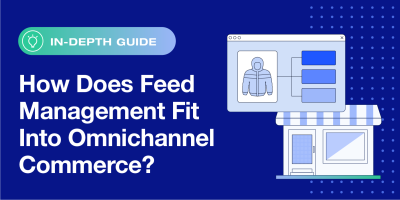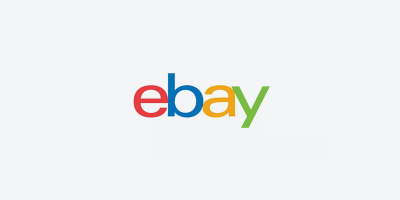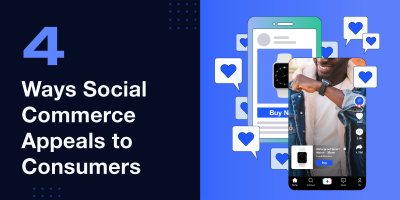It happened seemingly overnight, if you weren’t paying attention. Companies offering lightning-quick deliveries of online purchases proliferated and created a whole new way to shop. It’s called instant commerce, and many of the biggest ecommerce technology providers are all in.
Keep reading to learn more about instant commerce, including who is using it and the different models your business can employ.
What is instant commerce?
Instant commerce, also known as quick commerce, is a business model that provides rapid delivery and fulfillment of customer orders within hours—or even minutes—of them being placed.
DoorDash, Uber Eats, Amazon, Walmart, Instacart, and Gopuff are just some of the organizations that offer instant commerce options for retailers, grocery stores, and restaurants.
This model has gained particular traction in densely populated areas where logistics networks can support faster deliveries.
Retailers should note that 76% of consumers cited convenience as the reason for shopping online, and 66% said fast shipping was a necessity.
What are common models of instant commerce?
Depending on what a business is selling and the amount it is willing to invest into its fulfillment infrastructure, there are different options for implementing an instant commerce model.
Ultimately, all of these methods enable businesses to increase their fulfillment speeds and offer a more convenient customer experience:
Same-day delivery with self-managed infrastructure
Businesses can build and manage their own logistics and delivery networks to offer same-day delivery. This option gives businesses total control over the customer experience, delivery process, personnel, and inventory management.
This requires significant investment in logistics infrastructure, including delivery vehicles and technology for managing product feeds, orders, inventory, and delivery routes.
Same-day delivery with fulfillment partners
Businesses can also partner with third-party logistics providers and some marketplaces to offer same-day delivery. While they still need to integrate their existing ecommerce systems with the third-party provider, this approach is more cost-efficient than building a network from scratch.
For example, with Amazon Today, businesses can list their products on Amazon’s online marketplace and have same-day delivery taken care of by Amazon’s drivers.
Businesses can leverage the established infrastructure and wide reach of delivery partners to offer their products to broader, built-in audiences.
BOPIS and curbside pickup
Buy online, pick up in store (BOPIS) and curbside pickup are services for customers to order products online and pick them up at a physical store or a designated location, like an Amazon locker.
This method eliminates shipping costs and waiting times for customers, while also driving foot traffic to brick-and-mortar locations.
In 2023, more than 10% of all online orders were made with BOPIS fulfillment.
Hyper-local and rapid-delivery networks
One specialized instant commerce model revolves around the delivery of groceries and prepared meals. These deliveries require a specialized fulfillment network focused on speed and proximity.
Examples of this include delivery apps partnering with supermarkets and restaurants, or businesses operating a network of dark kitchens or stores.
Dark kitchens, also known as ghost kitchens, are restaurants that sell meals exclusively through delivery. Dark stores, on the other hand, are retail locations that exist solely for online shopping fulfillment. They differ from warehouses in that they are more compact and closer to population centers.
When businesses with multiple delivery hubs—stores or warehouses, for example—have different product availability and/or pricing, they often use regional availability and pricing rules to meet their local requirements. This allows them to show ads based on the applicable zip codes for a product.
What are the benefits of instant commerce?
Offer enhanced convenience in a world that demands it
Consumer expectations around delivery speed are changing. In 2023, 40% of online grocery shoppers expected their order to be delivered within two hours.
Instant commerce boosts customer satisfaction by meeting or exceeding customer delivery expectations. In a survey from Avionos, a digital consultancy, 62% of U.S. digital shoppers said that fast shipping makes for a positive retail experience.
It’s also important to note that with instant commerce, your brand is on the radar of customers who need items you sell more urgently. Some product types, like groceries and pharmaceuticals, are natural fits for an instant commerce model.
Provide a better brand experience
Some same-day delivery services allow you to use your packaging for delivery, which contributes to brand consistency—an important part of an effective omnichannel strategy.
Implementing BOPIS allows you to showcase your in-store branding and drive home an exceptional customer experience, so you can build loyalty and recognition, save media spend, and ultimately drive growth.
Increase sales and reduce cost-per-acquisition
Consumers are often willing to pay a premium for faster delivery.
A 2022 report by X Delivery shows that 75% of consumers say they have previously paid extra for expedited shipping. This figure rises to 90% for higher-income households.
Research has also shown that retailers who cater to consumers that prioritize speed and convenience see an increase in impulse purchases and a lower cost-per-acquisition.
Additionally, BOPIS brings foot traffic to your store, which can entice customers to make additional purchases when picking up their orders. According to a study from PYMNTS, 47% of BOPIS users make additional purchases once in the store.
What should I consider before implementing an instant commerce fulfillment model?
Ultimately, you want to know that implementing an instant commerce model can provide a good return on your investment, so consider these factors before making a decision:
Demand and customer base
Current data suggests that grocery, health and pharmaceutical, and household products have higher instant commerce demand than apparel, luxury, and technology product categories.
Customer demographics also play an important role. Millennials and Gen Zers are three times more likely to pay for expedited shipping than older shoppers.
The instant commerce sensitization of your customer base also determines how strong the demand is for the model. For example, customers in major U.S. cities may be much more familiar with instant commerce services, and so are more likely to expect it as an option when placing orders online.
Logistics and delivery networks
Much like demand, location plays a big role in how viable your logistics and delivery networks are for instant commerce fulfillment. You are in much better shape if your fulfillment centers are strategically placed in high-demand locations.
You also need to decide whether to build an in-house delivery fleet or outsource to third-party logistics providers. Some third-party fulfillment services may not even be operational in your region. Each option has its own cost, control, and scalability implications.
The type of products you offer could also impact the feasibility of instant commerce. For example, some third-party fulfillment services may not deliver large or heavy products. If you’re selling prepared food, you need to make sure that the delivery network you choose is fast enough.
Staff training and customer experience
If you’re fulfilling items yourself, you need to ensure staff are well-trained to hand off orders and operate any new tech you introduce, like inventory or order management systems.
Customers value reliability and communication in delivery, so you want a solid system in place for notifying customers about their order status. This is especially important for deliveries that are best received fresh, which is likely why major food delivery companies like DoorDash, Uber Eats, and Grubhub allow users to track the location of their deliveries in near real-time.
Tech infrastructure
Much like an omnichannel model, instant commerce requires a well-integrated tech backbone to keep everything running smoothly. Your ecommerce platforms and systems need to be integrated and synchronized for a smooth customer experience across all selling channels.
Need help getting started with instant commerce?

With its leading data feed management platform, Feedonomics helps brands, retailers, and agencies optimize and list products on hundreds of shopping destinations around the world. Learn more about our full-service solutions for advertising channels and marketplaces.




